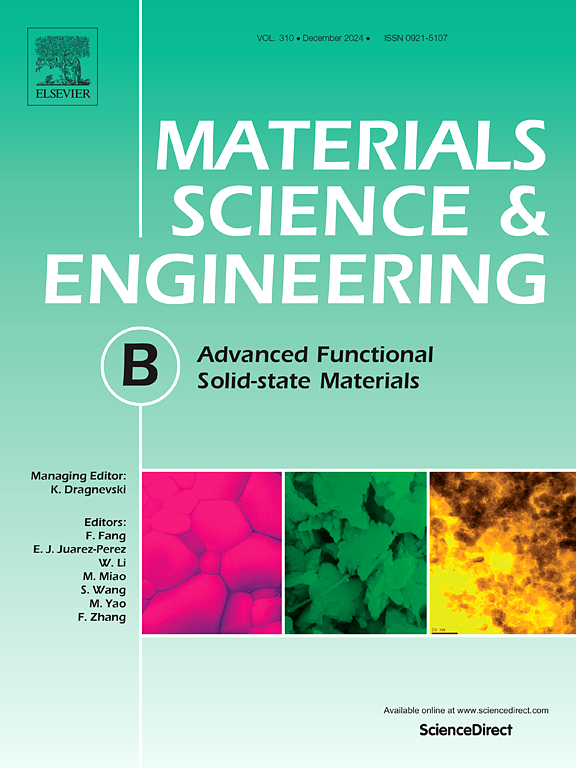La0.75Sr0.25Cr0.5Mn0.5O3-δ-Ce0.8Gd0.2O1.9 composite cathode in solid oxide electrolysis cell for efficient CO2 electroreduction
IF 3.9
3区 材料科学
Q2 MATERIALS SCIENCE, MULTIDISCIPLINARY
引用次数: 0
Abstract
La0.75Sr0.25Cr0.5Mn0.5O3-δ (LSCM) perovskite materials have emerged as the ideal cathode materials for solid oxide electrolysis cell (SOEC). In this study, we propose a method to prepare composite cathode by physically mixing Ce0.8Gd0.2O1.9(GDC) and LSCM powders. Compared to unmodified LSCM cathodes, the electrocatalytic activity and stability of the composite cathodes were significantly enhanced. Notably, the composite cathode with an LSCM-GDC ratio of 4:6 exhibited the greatest improvement in electrocatalytic CO2 reduction. The electrolytic CO2 current density of the LSCM-GDC(4:6)|GDC|SSZ|GDC|LSCF cell reached 1214 mA cm−2 at 800 ℃ and 1.6 V, representing a 54 % increase in current density compared to the unmodified LSCM cathode. During long-term stability testing, the LSCM-GDC (4:6) composite cathode maintained good stability with no significant degradation. Physicochemical characterization of the CO2 reduction process revealed that LSCM-GDC composite cathode increased the three-phase interfacial activity and surface oxygen vacancy concentration.

求助全文
约1分钟内获得全文
求助全文
来源期刊

Materials Science and Engineering: B
工程技术-材料科学:综合
CiteScore
5.60
自引率
2.80%
发文量
481
审稿时长
3.5 months
期刊介绍:
The journal provides an international medium for the publication of theoretical and experimental studies and reviews related to the electronic, electrochemical, ionic, magnetic, optical, and biosensing properties of solid state materials in bulk, thin film and particulate forms. Papers dealing with synthesis, processing, characterization, structure, physical properties and computational aspects of nano-crystalline, crystalline, amorphous and glassy forms of ceramics, semiconductors, layered insertion compounds, low-dimensional compounds and systems, fast-ion conductors, polymers and dielectrics are viewed as suitable for publication. Articles focused on nano-structured aspects of these advanced solid-state materials will also be considered suitable.
 求助内容:
求助内容: 应助结果提醒方式:
应助结果提醒方式:


